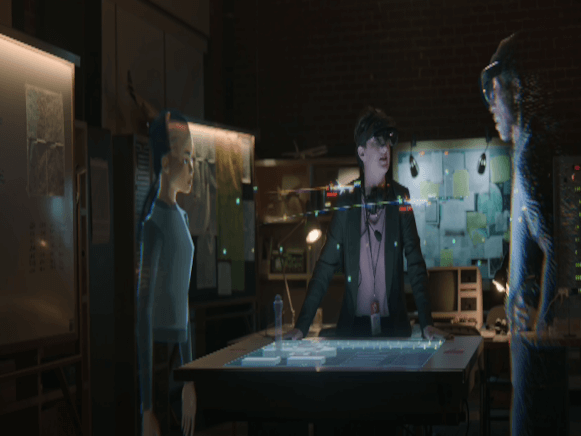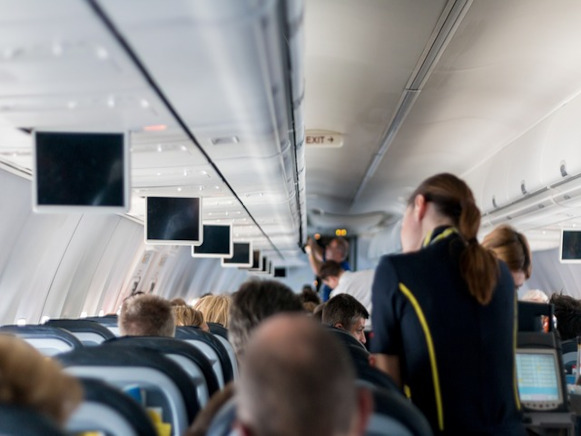HoloLens in aviation and industry 4.0
The fact that augmented reality will have a particular influence on aviation and the automotive industry is already apparent from the similarities between the industries. For example, prototype development can be made much more efficient with AR glasses such as the Hololens 2. But the data glasses also bring Industry 4.0 and the aviation industry together for the training of maintenance personnel, the introduction of new aircraft types and pilot training.
Why training with augmented reality makes aviation safer
In aerospace technology, Augmented Reality can already practically implement and apply Industry 4.0 solutions today. It is obvious that in these areas in particular, precision and safety are the most important factors in all phases from development and prototype production to the definition of procedures and training for daily use.
Mistakes can have catastrophic effects and, in extreme cases, even cost human lives. Therefore, strict rules, procedures and logging of even the smallest work steps are indispensable in aviation. However, this demand for safety also leads to expensive delays. For example, mechanics who are to work on new engines, landing gears or airframes usually have to learn the procedures directly on the aircraft. This means that airlines and aircraft manufacturers have to ground entire planes and cannot use them elsewhere.
With the improvement of augmented reality, procedures can not only be taught faster, but also adapted as needed without tying up real resources. With VR data goggles like the Hololens 2, such training can theoretically be delivered anywhere – worldwide. However, the most important point related to aviation safety is the fact that AR goggles allow virtual training where errors in the simulation do not result in catastrophic consequences. Since flight simulators have long been used in pilot training for precisely this reason, it is not surprising that this is also an important starting point for virtual and augmented reality solutions in aviation.
Hololens 2 in use during pilot training
Cockpit environments can be perfectly simulated with a Hololens 2. The integration of powerful simulation software can be performed both in completely virtual space and in augmented reality space. Moreover, applications are not limited to training and education.
For example, pilots in the cockpit can also use AR goggles to display additional information in their field of vision and concentrate on the essentials. This is particularly important in a crisis, when seconds are at stake.
In the military, the use of augmented reality in the form of head-up and helmet displays has been a proven aid for decades. With data glasses like the Hololens 2, such solutions can now be implemented easily and efficiently in civil aviation.
PLANSYSTEME
DO YOU HAVE ANY QUESTIONS? FEEL FREE TO CONTACT US!
Do not hesitate to contact us. In a first non-binding conversation we will find out how we can help you and whether our solutions fit you. We look forward to hearing from you!
Cabin crew can also use the Hololens 2
In civil aviation, engineers and decision-makers think first and foremost of the technical staff and pilots. No less important, however, is the training of other flying personnel, i.e. the flight attendants. They often train flights in real cabin simulators in “dry mode”, i.e. on the ground.
This training can be made much more varied, efficient and realistic with AR glasses such as the Hololens 2. Smoke in the cabin? Fire at the engine? Rioting passengers? All this and more can be trained even better in cabin training with augmented reality.
For the development and optimisation of processes and procedures, data goggles are the perfect tool for the future of the aviation industry. In addition, training can also be carried out almost anywhere, which is considerably cheaper than arranging the complete training in an expensive simulator.
Conclusion: In aviation, the Hololens 2 can fully develop its potential
In other areas, the Hololens 2 for Industry 4.0 is already showing new approaches in terms of project development and production. In aviation in particular, however, experience plays a crucial role. Experienced maintenance personnel are usually rare and locally bound.
As a result, they cannot easily pass on their knowledge to the next generation in training courses. Virtual training using AR glasses such as the Hololens 2 can significantly improve engine maintenance training and procedure development.
In prototype development, it is also possible to virtually simulate different approaches to a solution before expensive mistakes are made. Seeing a particular part on the drawing board or in a computer model is one thing. But being able to test the CAD developments in virtual use in all possible states and scenarios is what distinguishes AR and VR solutions for Industry 4.0 and aviation in particular.



